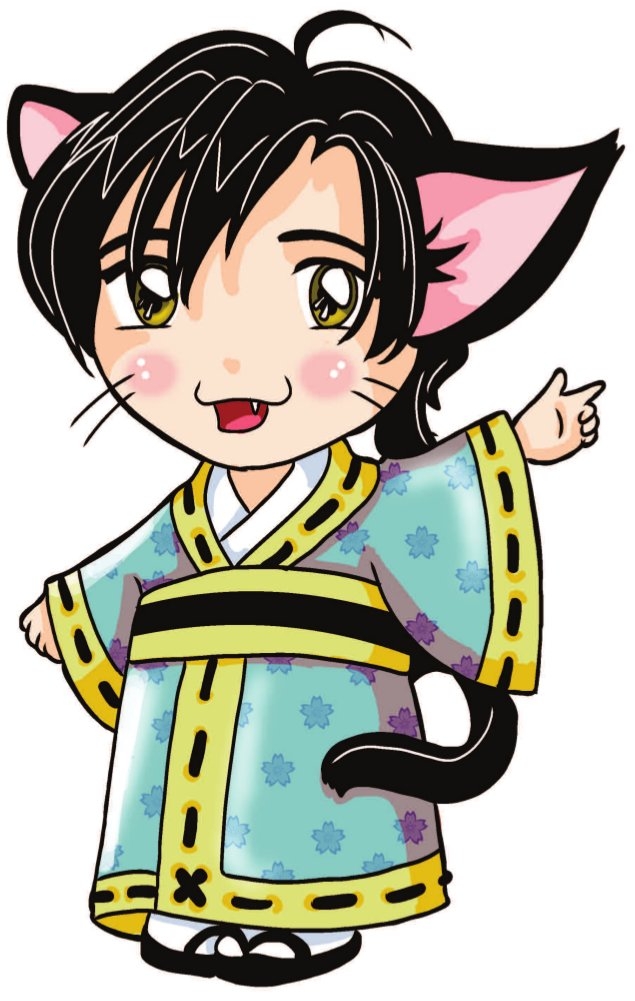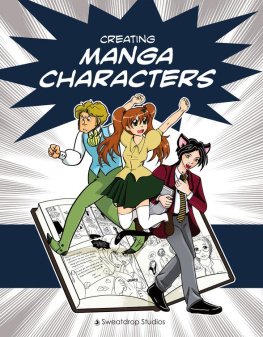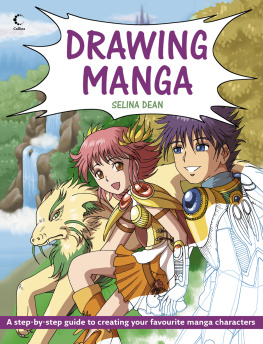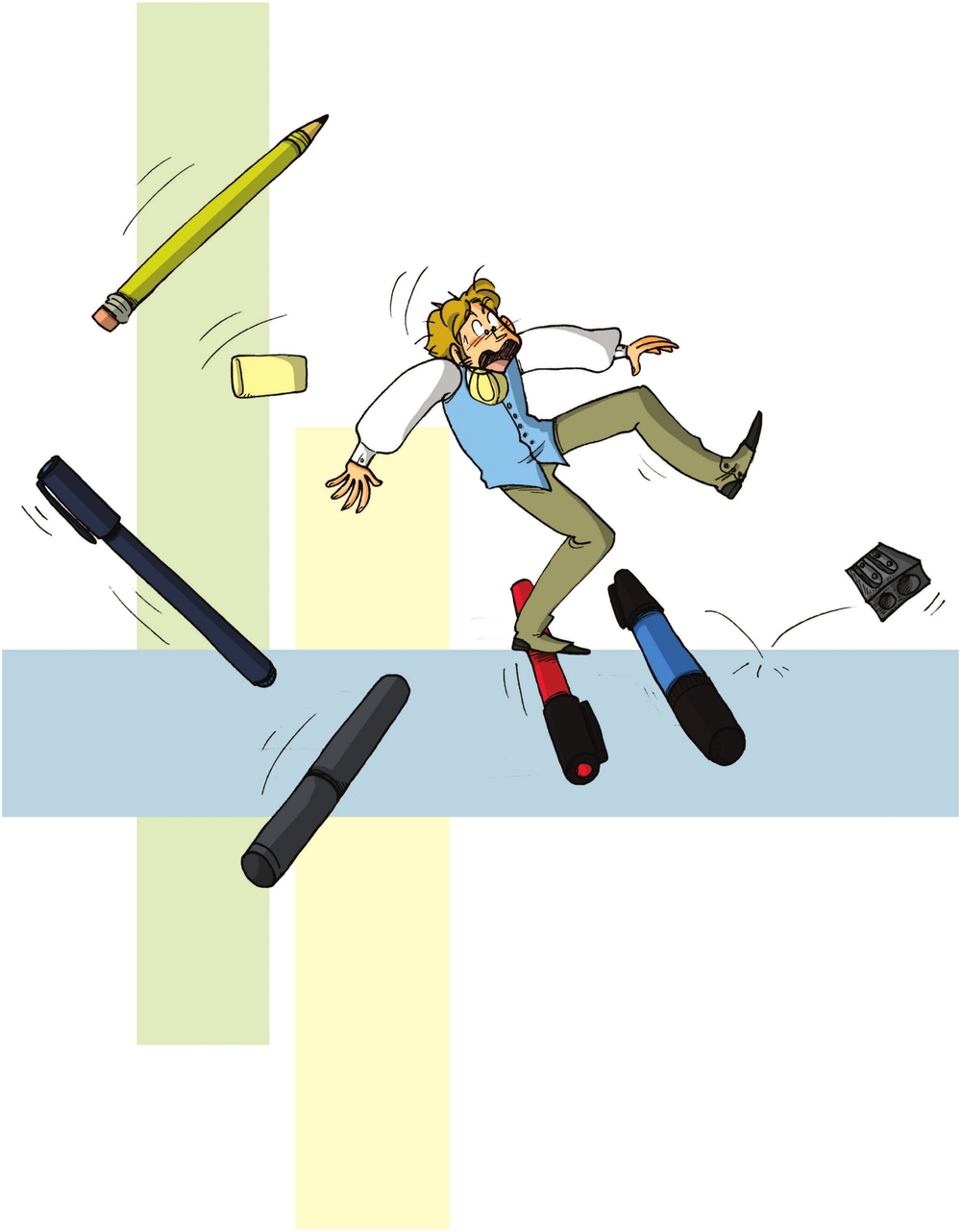First published in 2012 by
The Crowood Press Ltd,
Ramsbury, Marlborough,
Wiltshire, SN8 2HR
www.crowood.com
This e-book edition first published in 2012
Sweatdrop Studios 2012
All rights reserved. This e-book is copyright material and must not be copied, reproduced, transferred, distributed, leased, licensed or publicly performed or used in any way except as specifically permitted in writing by the publishers, as allowed under the terms and conditions under which it was purchased or as strictly permitted by applicable copyright law. Any unauthorised distribution or use of this text may be a direct infringement of the authors and publishers rights, and those responsible may be liable in law accordingly.
ISBN 978 1 84797 448 8
Art and text by Morag Lewis, Rebecca Burgess, Irina Richards, Chloe Citrine and Ruth Keattch. Photography by Sergei and Morag Lewis.
With thanks to Sonia Leong for advice and encouragement, and to Laura Jacques for assistance with proofreading.
History of Manga
Modern manga as an art form began in the early part of the twentieth century, but its roots date back much earlier than that. In fact, the earliest pictures that appear to show narrative continuity are attributed to a Buddhist priest named Toba Sojo who lived in the eleventh century. His Animal Caricature scroll, or Choju Giga, is a beautiful example of brush lineart, and is thought to be a satire on the Buddhist clergy of the time. Between then and the present date Japan has a long history of illustrated stories, from the Otogizoshi (literally Companion Tales), which are a series of short illustrated stories produced in the fourteenth and fifteenth century, to Kusazoshi (woodblock printed illustrated stories which covered all age ranges) and Ukiyo-e (literally Pictures of the Floating World, mass-produced woodblock prints that usually featured landscapes or city scenes), both of which became popular during the Edo and early Meiji periods (16001900).
Despite that rich history of illustrated storytelling, the roots of manga before World War II are hard to define. The word itself can be translated as whimsical pictures, which comes from the Chinese characters used to write it in Japanese. It was used to describe Kusazoshi and Ukiyo-e, but the first person to use the word manga in the context we know today was the artist Yasuji (Rakuten) Kitazawa (18761955). He was, in a way, the founder of manga at least of the word and concept. After the term manga became known, artists like Osamu Tezuka and Machiko Hasegawa were able to produce the artistic styles associated with manga that we all know and love. Tezuka took his initial inspiration from Disney, but developed it in his own way, which just goes to show that inspiration can come from anywhere, and telling stories in pictures really is a global phenomenon.
Nowadays, the words manga and anime and the corresponding graphic style are well known throughout the world. Manga is often referred to as those Japanese comics and it is assumed that most if not all manga is full of wide-eyed ninjas, assassins and maids in frilly dresses. In fact, manga is so much more than that.

Corbyn the catboy.
Manga is a medium, and thus covers all genres and audiences, from school kids to housewives. Because it is black and white it is cheap to produce in bulk, which means page count is not such an issue in terms of cost (as opposed to the early Western comics, which opted for coloured pages and therefore tried to squeeze as much story onto each page as possible). This in turn means authors have the space to experiment with page and panel layout and the time to go into emotions and thoughts in a pictorial manner. Manga characters are extremely expressive, with high emphasis placed on facial features and gestures. Sometimes it is sufficient just to draw a characters eye or hand to express their feelings and moods.
The art style itself is hard to define. It is true that many manga characters have big eyes and small mouths, but so does Betty Boop, and many manga characters have much more realistically proportioned faces. However, the emphasis on eyes is something that appears to be based on culture; research has shown that, when looking at pictures of faces, Western viewers tend to focus on the mouth while Japanese viewers focus on the eyes. You can even see this in the emoticons used by each culture; Japanese emoticons put emphasis on the eyes (^_^) while American emoticons emphasize the mouth (:)). It has been suggested that this is because emotional control is valued in Japan, but the eyes are harder to control than the mouth, so Japanese people would concentrate on the eyes to gauge emotion . Whatever the reason, the eyes are a particularly expressive part of the manga style, and it is not surprising that they are the feature most picked out by casual viewers.
Nowadays, manga is no longer an exclusively Japanese art form. Many eastern countries have started and succeeded in producing their own versions of manga-style comics. Styles like manwha (Korean) and manhua (Chinese) have emerged. In the West, many creators have been inspired and influenced by the manga style, just as Tezuka once took inspiration from Disney.
Creating Characters
Although a visual medium, there is no doubt that story is an important factor to manga. And what makes a good story exactly ? There are many factors that add up, but one vital factor is most certainly strong characters. Often a story will be of no interest to us if there isnt a great character there to lead us through it.
In Japanese manga, a storys focus on a character is particularly emphasized visually. The popular and distinctive styles we recognize today began with among others the artist who is called the Godfather of manga due to his roaring success; Osamu Tezuka. Tezuka purposefully exaggerated the eyes and mouths of his characters so that they could become more likeable and charm readers into following them through a story.
Other areas of Japanese culture take character creation one step further, inventively using the look, personality and setting of a character to create entire franchises. It is not uncommon to find buildings or institutes in Japan that have cute mascots indeed, Tokyo Tower and Mount Fuji both have cute alter egos! Vocaloid is another great example of this. It is a rather technical computer programme, mainly aimed at professional musicians . But its invention of selling each different voice as an adorable character with a distinct personality has led to a much more charming product. As a result, Vocaloid has reached out to a much wider audience and created everything a great character can offer; from fan-art communities to sell-out concerts.
Whether we find them enchanting, or love to hate them, characters are always what we relate to the most; they are what we remember in a story, manga, comic, video game or franchise. Whole websites are dedicated to single characters from media, wikis are formed to record as much information as possible about beloved characters from blood types or birth dates to favourite foods and animals. While it is always possible to find similar characters, it is near impossible to find two characters completely alike in physical appearance or personality. Japans variety in characters is an inspiration to many manga fans, and we hope in this book we can help you create your own inspiring characters!



![Junka Morozumi [両角 潤香] - The Manga Artists Handbook: Drawing Basic Characters: The Easy 1-2-3 Method for Beginners](/uploads/posts/book/305470/thumbs/junka-morozumi-the-manga-artist-s.jpg)





